We are determined with terms, choose the right material and brand, as well as give detailed practical advice.
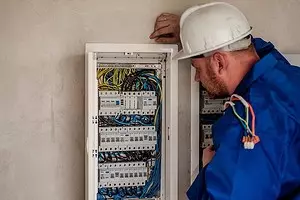
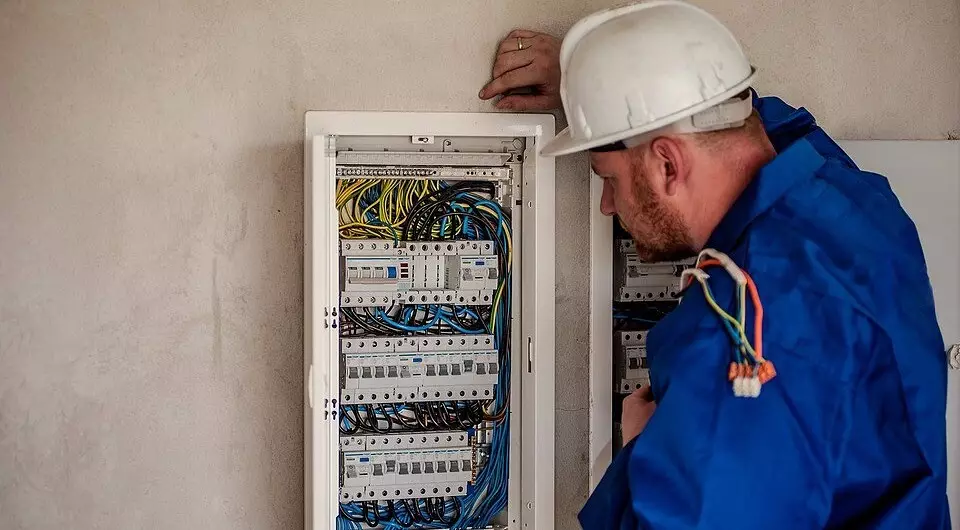
Messages about fires, the cause of which was a faulty wiring, recently so often that we began to relate to such trouble as an inevitable evil. And completely in vain. Although the number of electrical appliances in dwellings and their power has sharply increased, you only need to choose the right cables and wires on the plot - it will help us avoid many troubles.
All about cables and wires
Differences Wire and CableTerminology
Selection of material
Select section
Brand cable
Types of wiring for home
Wiring on the site
Coordination of the Plan
Practical advice
How to distinguish wire from cable
Wires and cables differ in the number of liveli (from 1 to 37), section (from 0.75 to 800 mm2) and nominal working voltage. They are made with insulation to voltage 380, 660 and 3000V of alternating current, cables on any voltage. Insulated wire conductive lived in the shell of rubber, polyvinyl chloride or viniplast. For protection from mechanical damage and exposure to the external medium, the insulation of some brands is covered with a cotton braid, impregnated with anti-nipple. Wires intended for laying in places where there is an increased risk of their mechanical damage, protected by an additional braid from steel galvanized wire. So, if you have something very flexible in your hands, having a single isolation and a thickness of no more maiden, it is most likely a cord. If we are talking about a product with a thickness with your hand and about the same stiffness consisting of single conductors and equipped with double insulation is a cable. In the case when you need to bring electricity to the cottage or electrify the plot, but also I do not want to spoil the look with hanging wires, you will need a cable. How to choose it?
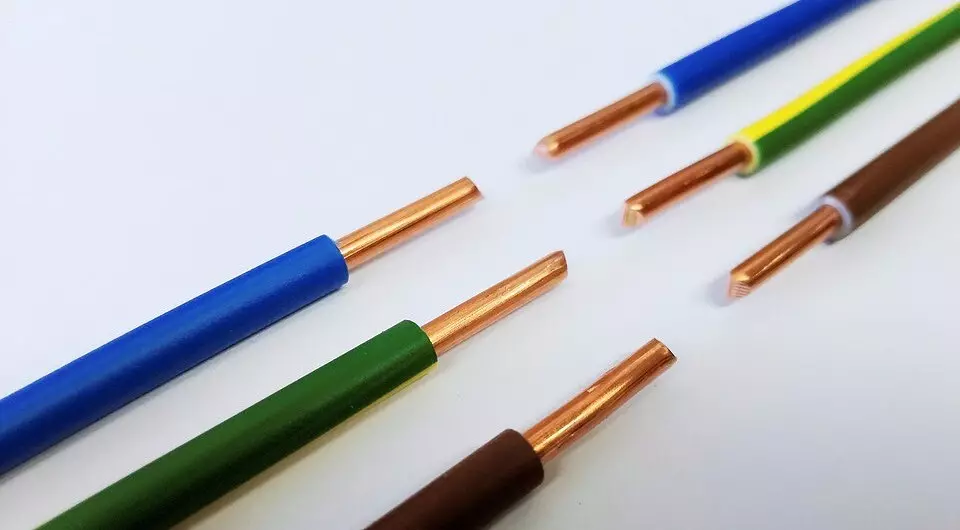
Equipping your apartment with numerous electrical appliances requires many different wires and cables, about choosing and placeing which you need to think in advance.
First you need to determine what is to be installed. It is important. For if you have a two-storey stone cottage, standing on a hill, never flooded with water, and all work on the site is limited to the haircut of lawns, the solution will be one. If, for example, the place is a swampy, with close running of the groundwater, and you want to bring electricity to a wooden bathhouse, where the electrocamenaker is installed for the sauna, and on the site you are plowing the land with a tractor, the solution will be completely different. Nevertheless, in both cases, do not do without cable. Consider the process of selecting the cable in steps. The issue of the value of the obtained decision deliberately leave beyond the framework of the article, everything depends here only on the thickness of your wallet. Just do not forget that at the same time and cheap, and it does not happen well.
We understand the terminology
- He lived - this is generally a separate conductor.
- Wires - Products containing one or more isolated veins either twisted wires, on top of which there is a lightweight protective sheath (for example, a metal winding, winding or braid from fibrous materials).
- The installation wire is a wire for low voltage electrical distribution networks.
- Electric cord - wire with a cross section of up to 1.5 mm2 with insulated high-flexibility cores. Used to connect moving devices. The veins in this case are definitely multi-way. In addition, they are interconnected by a twist or shared braid.
- The cable is a few insulated wires enclosed in one or more protective shells.
How to choose the right material
Copper is preferable to aluminum. It has a greater conductivity and less susceptible to corrosion. In addition, compared to copper aluminum, it is definitely, and with several bends, it may simply be broken. The negative property of aluminum is and its fast oxidation in the case of contact with air, the result is the formation on the surface of the coating oxide film. It does not spend the electric current well, which means it prevents the creation of good contact. The place with a bad contact will be sucking, to spoke, even more oxidized, even more warm, and there is not far to the fire. And if you do not want to repeat the story of the "Cat House", you will have to periodically check the places of attachment of aluminum lived to electrically appliances.
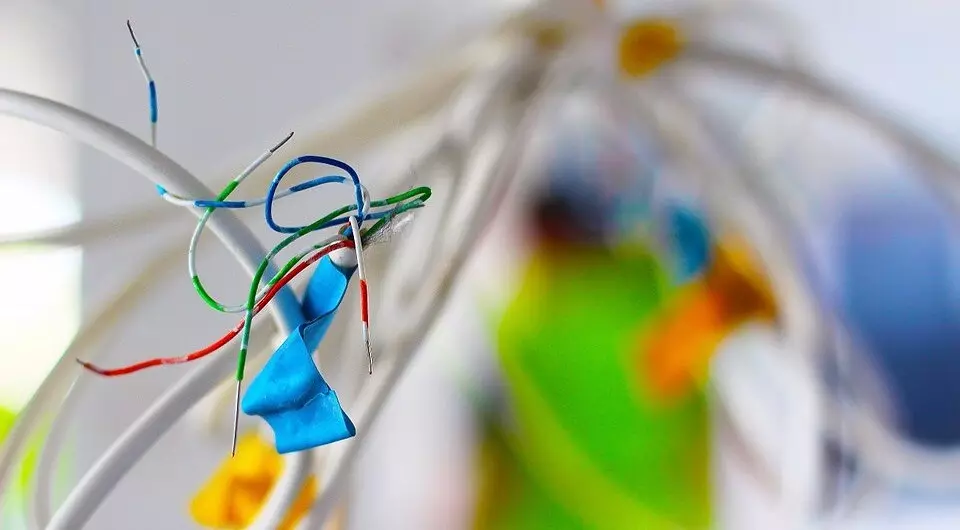
When attaching in screw clamps, aluminum shows another drawback - a low yield strength. As a result, aluminum slips out from under the clamp ("flows"), relaxing contact. Thus, aluminum wires that are in junction boxes and other devices, where clamps are used for the connection, also require periodic check and torture.
In addition, with copper aluminum with copper, a galvanic pair is formed, in which aluminum, exposed to electrocorrosion, is destroyed. What leads to an additional compound deterioration. JSC the results of this phenomenon we just talked.
Select the cable cross section
The cable usually consists of 2-4 lived. The cross section (more precisely, the cross-sectional area) of the veins is determined by its diameter.
Recall: the area of the circle S = 0.78d2, where D is the diameter of the circle.
Based on practical considerations, with small values of the current force, the cross-section of copper veins takes at least 1 mm2, and aluminum - 2 mm2. With sufficiently large currents, the wire section is chosen at the plug-in power. It is usually based on the calculation that the load of 1 kW requires 1.57 mm2 of the cross section of the vein. From here follow the approximate values of the cross sections of the wire, which should be followed when choosing its diameter. For aluminum, it is 5a by 1 mm2, for copper - 8a by 1 mm2. Simply put, if you have a flow water heater per 5 kW, it is necessary to connect it with a wire calculated at least 25a, and for a copper section should be at least 3.2 mm2.
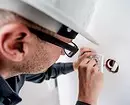
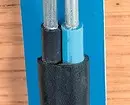
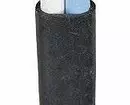
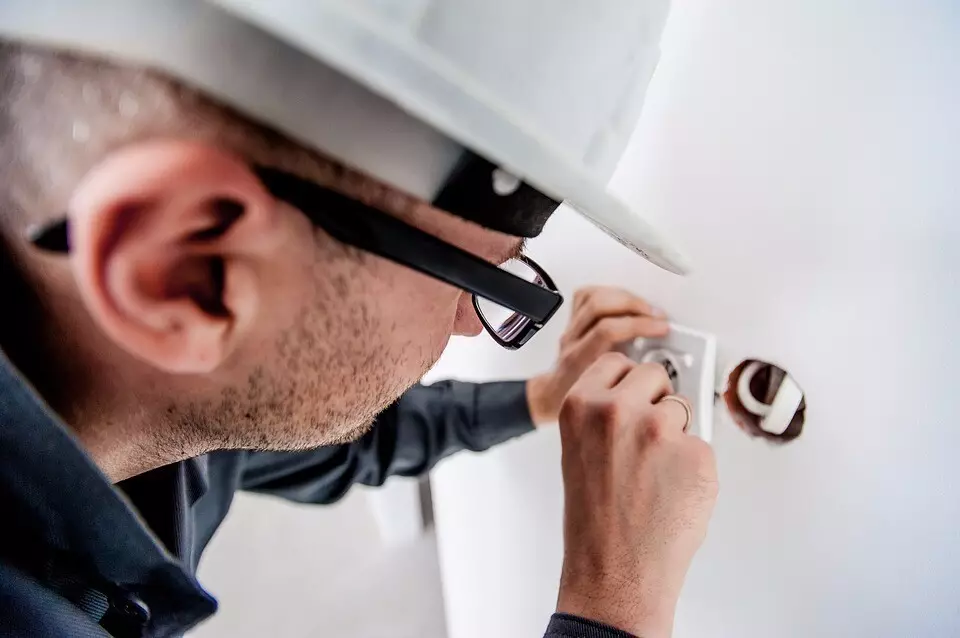
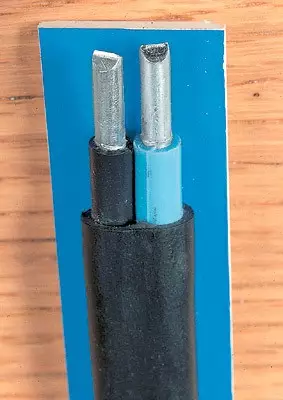
AVVG power cable: aluminum veins (1-4), a cross section of from2.5 to 50 mm2, polyvinyl chloride insulation, a polyvinyl chloride shell. Designed for laying both in dry and in humid premises.
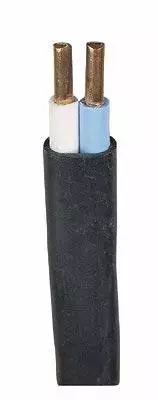
Power cable VVG: Copper veins (1-4), section from 1 to 50 mm2, polyvinyl chloride insulation, polyvinyl chloride shell. Used for laying in dry and wet rooms.
Consider from a number of preferred cross sections (0.75; 1; 1.5; 2.5; 4; 6 mm2, etc.) for aluminum wires, the cross section is chosen at the stage higher than for copper, since their conductivity is Approximately 62% of copper conductivity. For example, if the calculations for copper need a section of 2.5 mm2, then for aluminum you should take 4 mm2, but for copper you need 4 mm2, then for aluminum - 6 mm2, etc.
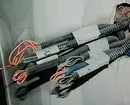
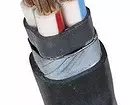
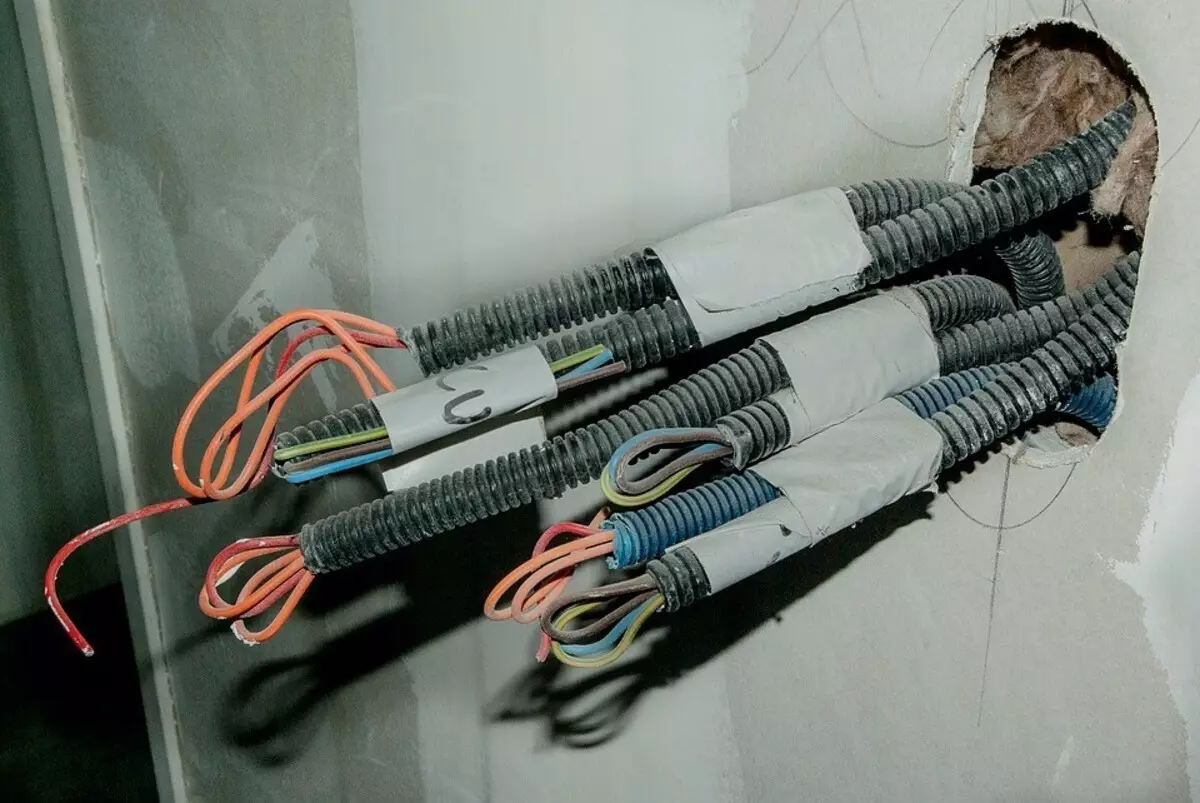
Wires for internal power and lighting networks are often placed in protective corrugated plastic hoses.
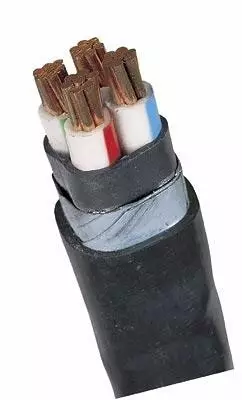
VBBSHB cable: Copper polyvinyl-chloride on a housing, a polyvinyl chloride shell, an armor of galvanized steel strips, a hermetic external hose. It can be applied everywhere where there is a danger of mechanical damage to the wiring during operation.
In general, the house cable is better to choose a larger cross section than is required, - suddenly you want to connect anything else? In addition, it is necessary to check whether the cross-section of the wires with the maximum actual load is consistent, as well as with the current protective fuses or the circuit breaker, which are usually located next to the counter.
So, you finally decided on the material and cross section. The next step will be the selection of the brand of cable or wire.
What is a cable brand
The brand of the wire is the letter designation that characterizes the conductive veins, isolation, the degree of flexibility and the design of the protective covers. The labeling of domestic goods use the following notation:- The first letter indicates the material of the conductive veins (say, a - aluminum). The lack of letters in the brand means that the conductive core is made of copper.
- The second letter denotes the wire.
- The third is the insulation material (for example, p - rubber, in - polyvinyl chloride, P - polyethylene).
In the brands of wires and cords, letters can also be present, characterizing other elements of the design:
- O - braid.
- T - for laying in pipes.
- P - flat.
- F - metal folded shell.
- G- flexible, etc.
The most important rule is to buy with a margin. Of course, if the lengths are not enough, there are ways to increase it. But keep in mind that the connection site is a place of contact, and it is fraught with trouble.
Types of Provo.
Types of wiring for home
By the method of performing electrical wiring can be open and hidden. Hidden wiring are divided into two groups. The first includes wiring in different types of pipes: steel, glass, asbetic, rubber, and others. The second group is formed by wiring in elements of building structures, without pipes. Pipe laying allows you to make a unimpeded wire replacement if necessary. In dry rooms, hidden wiring is carried out in pipes (insulating, insulating with metal shell, steel), in deaf boxes, closed channels, as well as special wires. In wet rooms - in pipes (insulating moisture resistant, steel), deaf boxes and also special wires. In raw and especially raw rooms, hidden wiring is allowed only in insulating moisture resistant pipes.
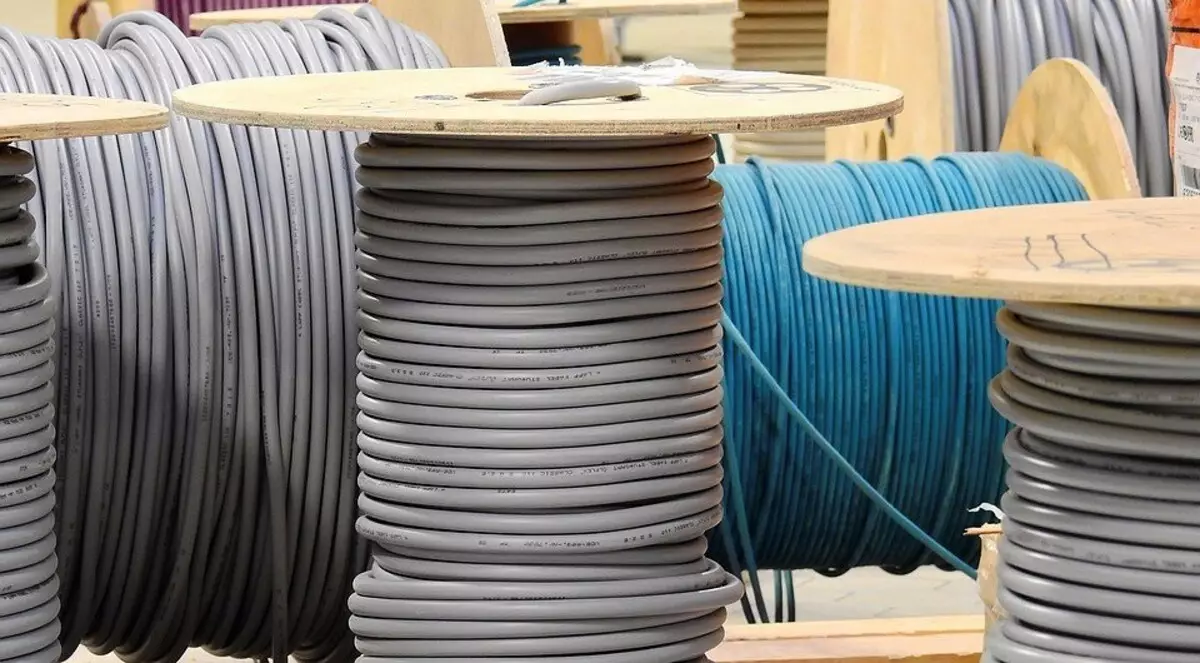
Wiring on the site
If you are going to use pipes when carrying out electricity in the area, keep in mind that they mainly protect the cable from mechanical damage (ensuring that you, jumping around the beds, accidentally do not touch it with a shovel or cultivator). We especially do not share that the pipes will protect the wiring from moisture, the water will find water. In addition, the pipes may form condensate from air penetrating at the input or exit end. But let it really do not care. Cables themselves are produced hermetic. Before the release on sale, they are 12 hours to be kept in water under voltage exceeding the nominal. Therefore, it is better to think about the depths of the cable laying.Armored cables can be stacked simply into the ground, but it is better that it is lower than the drainage depth. Otherwise, the expansion and compression of the Earth are capable of calling the cable. True, this depth may turn out to be greater than the depth of groundwater. Putting the cable into water is also undesirable. A compromise may be a gasket in asbestos pipes with additional sealing. And to provide cable, it is not necessary to push the capabilities and expand it at the laying (especially if you run work in the summer months, the winter cable will join and can burst). Another option is to use ABBBS and WBBSHB brands cables that carry out mechanical loads.
Coordination of the Plan
The coordinates of the permitting body of the Energonadzor can be found either in the directorate of your garden partnership, or in the district administration. Of course, no one is engaged in the coordination. But if the misfortune happens and, as a result of the closure, there will be a fire or something like that, insurance companies in the absence of such a document may refuse to compensation for damage.
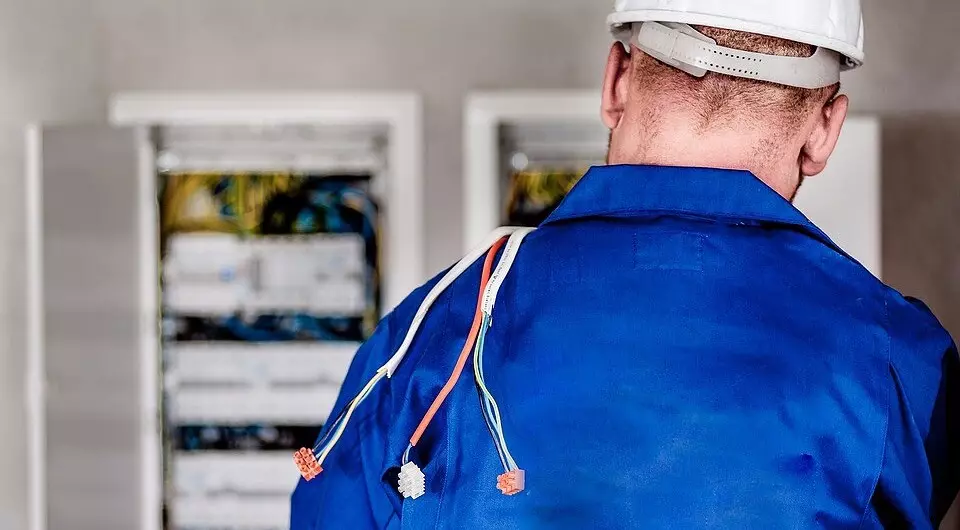
Practical advice
- If a permanent wiring is paved, it is better to use a cable with current-carrying veins from single wire. It is less than multi-capacity, corrosion is subject to corrosion (due to the lower surface area), and it is easier to clean it before connecting.
- Rubber under the action of ozone contained in the air, agroves and is covered with microcracks. Therefore, it is desirable not to use cables with rubber coating at sunny places. Preferably armored versions and cable laying in the ground.
- Polyvinyl chloride is inclined to cracking with a strong frost, so it's better to use cables with polyethylene coating on the street.
- Polyethylene dislike firefighters, so in the premises the stabilized self-painting polyethylene is preferable (in the brand of the wire is indicated as PS).
- Cables in the lead shell better lay in summer. In the cold when they are bending due to the small frost resistance of the lead, the formation of microcracks is possible.
- AVVGng cables, WDGng, Avbbšng and VBBSNN are characterized by a shell or a low flammability PVC plastic hose. Applied in places with increased fire hazard.
- If you are going to conduct a cable in an aquatic environment (for example, to connect pumps in wells or for powering a summer fountain on the site), you will need a special MARD WFP for submersible engines. The disadvantages of this model include what the cable is manufactured alone. So, for connecting the pump or fountain, you will have to use two wires, returned with each other (so as not to be rested). As an alternative, you can consider the use of French Lyonipompe Cable. It is three-core, cross section of 1.5 to 4 mm2.
- For temporary connection, it is advisable to use stranded cables of brands kg and PVA (kg - with copper multi-propelled veins equipped with rubber insulation, in a rubber shell), for permanent connection: on the street - VG, for gasket in the ground - WBBSHV with protective armor.
- If the cable is required through combustible materials (attackers are the walls of your wooden house or oil-containing substances in your garage), the letter "H" (non-combustible) or "NG" should be present in its designation (non-propagating combustion). This, for example, CBN cables and WGng, which, by the way, is better to use not only in wooden houses (to the question of the "Skin House").
- If there is a neutral soil with a deep lumbering of groundwater, then you will fit the AVVGZ and WGZ brand cables, recommended for laying in the ground with low corrosion activity in the absence of mechanical damage and stretching effort. If the terrain of the swampy and land on the site is exhausted (this turns out, for example, for the fact that the in the autumn of the garden bench in the spring turned out to be overwhelmed; such a fence poles, etc.), it is better to use ABBB and WBBSH (Polyvinyl chloride on the housing, a polyvinyl chloride shell, an armor of galvanized steel strips, on top of it a hermetic external hose), designed for any operating conditions and resistant to mechanical damage.
- In addition, how to know how voltage in the network and how many phases are used on your site. If 220 V and 1 phase, then a two- or three-core cable will suit (the third lived - "Earth" - usually has a smaller cross section than others). If 380 V and three-phase current (which is required for the operation of some pumps and motors), it is necessary three-core (sodinachal veins) or a four-core cable (the fourth lived - "Earth"). This is reflected in the product marking. For example, kg - 42.5 means a four-core cable with a cross section of the main veins 2.5 mm2.
